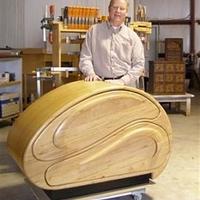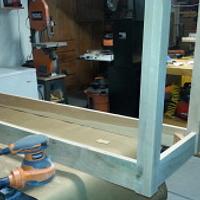
Madts
in over 11 years
Kreg system
Am I being a snob thinking that Kreg joinery is not proper joinery? To me it seems that it can not be as strong as the more traditional kinds like the mortise and tenon, to name just one.
Tor and Odin are the greatest of gods.
16 Replies
I have made many things using Kreg joinery and products. I made a little investigation into whether glue is needed and it was about 50-50….so I quit using glue. I quit because plywood is so cheap anymore and if I blew through a top layer veneer I could just stick a new one in and keep going. I have a photography studio and it is populated with cabinets that have little or no glue in them and the strength of just the joint itself is over the top, and we have never had an issue. Now as far as true joinery of wood working I suppose someone could build a case that it is a fad or cheating….but couldn’t that be said of Festool dominos, everyday plate joinery, even using a machine to mortise, or a tenoning machine for you TS? I personally have seen some very nice cabinets/furniture that have been made with Kreg joinery, as long as they are hidden….who cares? Is it against the rules? Who made the rules?…..
Just my .02
Mike
Mike
My wife bought me a Kreg Jig for Christmas. She saw the infomercial and thought it would be the ideal way to get me to build her a sewing box. She did get the sewing box, but I never touched the Kreg during the build. I have used it though. I found that it was the perfect way to attach the MDF top to my POS bench. When I get around to building a new top, replacing it will be easy.
I could see using it in other projects like jigs and such, but never in place of mortise and tenon, or other traditional joinery in furniture. I don’t want to get into the habit of “easier is better”. Frankly, I just don’t trust the screwed butt joint, with or without glue.
Where are the band-aids?---Pro Libertate!
i might over use kreg jig. but i always use it with glue. i think it is not cheating, it can be a good jumping in point for beginers or a way to get a project built with when you are tight on lumber.
Not for me but then it depends on the application .
Sam Maloof to my great surprise used screws in his rocker chair leg joints and plugged it .
I will stick with glue joints be they tennon ,biscuit,dowel,box or plain edge joint and use plenty of screws when building with MDF or melamine board .
It’s preference that everyone develops just like wearing a ball cap backwards and I can see reasons for that but don’t complain about the sun getting in your eyes .
I used kreg pocket hole screws early on when I built my shop’s and router cabinets
I always used tongue and groove with that. It allowed me to use less clamps and remove them sooner.
In all honesty the pocket hole are hideous. You can hide some but you will see some too.
I also don’t think it’s a solid system either.
Abbas, Castro Valley, CA
I think Kreg joinery has it’s place in certain situations, but certainly not for everything.
For example, I used it in the cabinets I did recently. The face frames were all PS’d both to join the stiles and rails, and then to join the face frames to the carcass. Its a very strong method of joinery, whether its proper or not. A nice benefit of using them to join the Face frames to the carcass is that there are no brad or pin holes to fill. Sure, I could have run a dado along the back edge, and joined it to the plywood that way, but this was quicker, easier, with less opportunity to muck it up (Also, dont have a biscuit joiner and can’t afford festool products). It takes me long enough to do cabinets as it is. I can’t see adding any extra time for M&T joints and glue to set up when pocket screws are faster, strong enough and will never be visible.
I wouldn’t use it on a jewelry box or a Krenov influenced cabinet etc, but for kitchen cabinets (face frames only)…I won’t think twice.
I have the Kreg system. I’ve had it for 4 years. It’s still brand new in the box. I don’t really know why but, it just never comes to mind. I know, if I used it, it would be with glue….
I'm the one with the beard
Proper Joinery?
Let see; I’ve used, Pocket screw joinery, biscuit joinery, dowels, splines, box joints, half blind dovetails, through dovetails, sliding dovetails, dado joints, rabbit, butt joints, lap joints, ship joints, miter joints, half lap miter joints, tongue and grooved joints, and even mortise and tenon joints and I’m sure I’ve left out a number of others.
Please tell me which of the above are considered “proper joinery” and which are not.
If a woodworker is limited on the type furniture or cabinetry he or she builds, than it will make a difference of what type joinery they may choose.
If a woodworker is limited by their skill set or experience, than it will make a difference of what type joinery they may choose.
If a woodworker is limited by their tools, than it will make a difference of what type joinery they may choose.
If a woodworker is narrow minded, than it will make a difference of what type joinery they may choose.
I’m not sure if there is a “proper Joint”, some are just better than others for certain applications. I’ve built hundreds and hundreds of major projects over the past 30 years or so and welcome anyone to visit my web-site and look at some of my work. It would be interesting to see if you can pick out which projects I used what type joinery.
Just saying; : )
John @The Hufford Furniture Group
I’m with you Huff…..
The application should dictate the joinery, not the other way around. The same applies to all forms of methodology in woodworking. You wouldn’t use a chainsaw to cut a 45 degree angle on crown mould, nor would you use a tenon saw to cut a large beam.
Pocket hole joinery is ideal for joints where the back side is hidden, as in face frames for cabinets. If you are building a bathroom vanity there is no reason to use mortise and tenons for the face frame when pocket hole screws will let you build a sturdy and square frame in a fraction of the time. In my opinion, there is no reason to use glue with pocket screws either.
All the different methods listed have their place and, in my opinion, there is no single “best” joint.
I have one of the earliest Kreg jigs, a K2 that is probably over 20 years old. It gets used on a daily basis.
Artisan Woodworks of Texas- www.awwtx.com
I really thought about going with a Kreg system, but eventually decided to build and use a horizontal mortising machine and make “floating tenons and mortises” instead. I mostly build A&C type stuff with 90-degree angles, but this thing rocks at doing that.
http://www.horizontalheavens.com/horizontalrouterbasedmortisier.htm
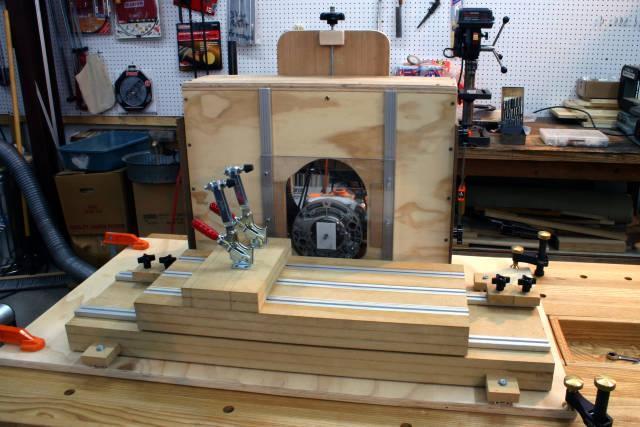
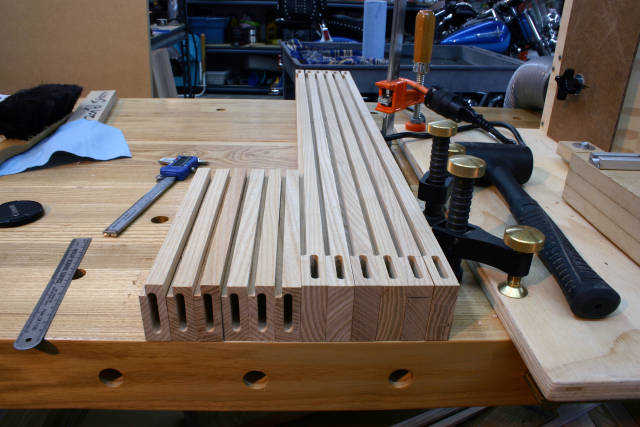
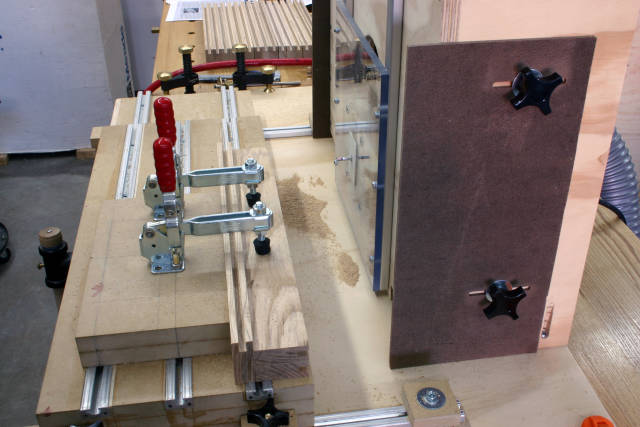
HorizontalMike
It has it’s place for me. Shop cabinets, etc.
Nice machine Mike.
Several years ago I purchased the Festool Domino, and have not looked back (though, there are limitations to its application, as well). For 90% of my work, which has been primarily case work (blanket chests, shelves) and large furniture (benches and tables), the Domino is ideal.
As HM and Bill state, with broad experience behind them, the application dictates the joinery – at least narrows the options. For me, I used the Kreg system before ‘floating joinery’, and may use it periodically when doing something quick – not for fine furniture. At some point, I’ll build an amateur version of the Horizontal Mortiser. I did purchase Pantorouter plans, though, I’m not sure I want to get into that approach.
MJCD
For those who do use pocket holes and want to plug them on the cheap: http://woodworkingweb.com/creations/246-band-saw-pocket-hole-plug-cutting-jig
I’m not a pocket hole fan mainly because I like the process of cutting joints. That said, I see no reason why folks who want to use them shouldn’t. It’s always nice when we have the freedom to make our own choices for whatever reason.
Mike, an American living in Norway
Recent commission utilizing pocket screws for the face frame and side frames. A companion piece is on the bench now.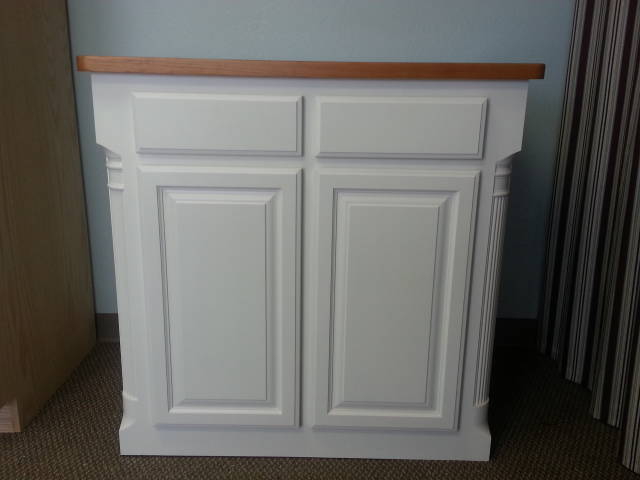
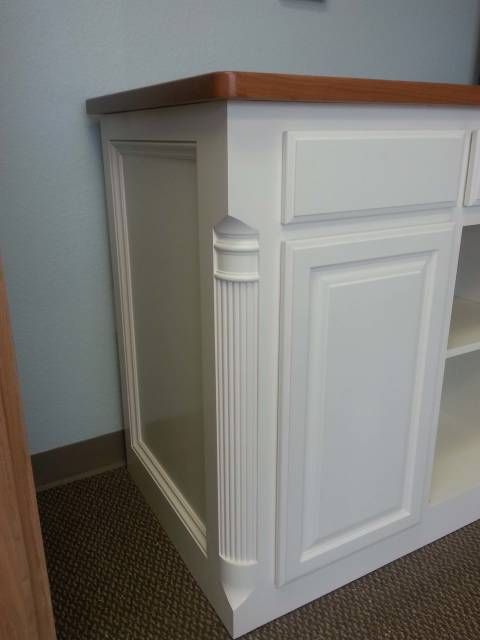
Artisan Woodworks of Texas- www.awwtx.com
I’ll join the “it depends on the project” crowd. The face frames on the cabinets I’m building are a great application. Some plywood boxes for my son were another. I don’t use pocket screws often but I certainly would want to discount them just because they might not be “proper” joinery.













